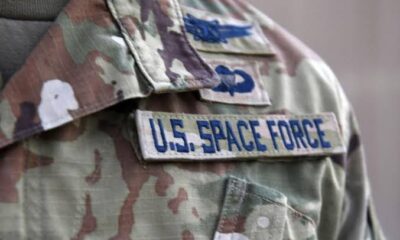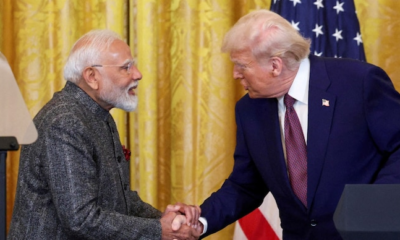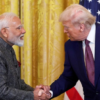Shubhanshu Shukla Returns After Historic Space Mission, Paving the Way for India’s Human Spaceflight Future
New Delhi/San Diego, July 16 — India’s human spaceflight ambitions took a major step forward on Tuesday as Group Captain Shubhanshu Shukla, the first Indian astronaut to live and work aboard the International Space Station (ISS), safely returned to Earth, concluding his record-setting 18-day mission.
Shukla’s participation in the Axiom-4 (Ax-4) mission — a commercially operated and globally collaborative spaceflight aboard SpaceX’s Dragon spacecraft — is being hailed as a defining moment in India’s space history. It marks the country’s first astronautic engagement with the ISS, and only the second time an Indian has ventured into space, after Rakesh Sharma’s Soviet-backed mission in 1984.
The spacecraft carrying Shukla and his three international crewmates — Commander Peggy Whitson (USA), Slawosz Uznanski (Poland), and Tibor Kapu (Hungary) — splashed down in the Pacific Ocean near San Diego, California at approximately 3:01 pm IST. The moment was met with nationwide pride and emotional celebration across India.
As the drogue parachutes deployed, slowing the capsule’s descent after a fiery re-entry at over 27,000 km/h, Indian flight controllers, scientists, and citizens alike held their breath. Moments later, the Dragon spacecraft gently hit the water, ending a journey that has become the cornerstone of India’s modern space aspirations.
A Mission of Many Firsts
Shukla’s mission — though brief — packed in an unprecedented set of achievements.
He became the first Indian to orbit aboard the ISS, representing the country in microgravity for more than two weeks. During this period, Shukla participated in cutting-edge experiments across multiple disciplines, including biotechnology, materials science, and AI-powered robotics.
Among his most high-profile contributions was the Sprouts Project, which explored plant germination in zero gravity — research with critical implications for long-duration space missions and future lunar or Martian agriculture. Other experiments focused on cellular health, muscle atrophy, and autonomous robotic systems, expanding India’s footprint in space-based science and opening new avenues for collaboration.
Commander Peggy Whitson, a veteran of four spaceflights, praised Shukla’s professionalism, calling him “an exceptionally composed and curious crewmate,” and added that his performance on a first-time flight “far exceeded expectations.”
Stepping Stone to Gaganyaan
Beyond the science, Shukla’s voyage was a training ground for the Indian Space Research Organisation (Isro), which is preparing to launch its own human spaceflight mission — Gaganyaan — in the near future.
The Ax-4 mission gave Indian engineers, flight surgeons, mission planners, and support teams their first real-time experience in monitoring and assisting an Indian astronaut in orbit. These insights, experts say, are invaluable.
“This mission was our laboratory, our dress rehearsal for Gaganyaan,” said a senior Isro official on condition of anonymity. “From crew health management to psychological protocols, from launch simulation to splashdown recovery — every detail we observed will directly feed into how we prepare our astronauts for future Indian missions.”
Isro invested close to ₹550 crore in supporting Shukla’s participation in Ax-4 — an amount officials justified as a strategic and long-term investment. The mission helped Indian teams understand microgravity impacts, orbital operations, communication latency, and astronaut rehabilitation — all under real-world conditions.
One Isro medical officer, who was part of the ground support team, explained how the re-entry phase, g-force exposure, and the body’s post-landing recovery are now being closely studied. The week-long rehabilitation program Shukla will undergo after splashdown will also serve as a template for future Gaganyaan protocols.
From Ahmedabad to Orbit: A Nation Watches in Pride
Born in Ahmedabad, Gujarat, and trained as an Indian Air Force pilot, Shukla has long been regarded as a top candidate for India’s first indigenous space mission. His selection for Ax-4, however, made him the public face of a new generation of Indian astronauts, equipped to operate in both international collaborations and homegrown missions.
Social media platforms and national news channels have been flooded with congratulatory messages, with hashtags like #WelcomeHomeShux and #IndiaInSpace trending shortly after splashdown.
Prime Minister Narendra Modi, in a statement, said:
“Group Captain Shubhanshu Shukla’s return marks a proud moment for every Indian. His contribution reflects the spirit of New India — bold, brilliant, and global.”
Looking Ahead
With Shukla’s safe return, India has taken a decisive leap toward becoming a serious contender in human spaceflight. Analysts note that the mission’s success is not only a matter of national pride but also an affirmation of India’s readiness to play a bigger role in international space partnerships.
Plans are already underway to use lessons from this mission to finalize the astronaut training regime for Gaganyaan, which aims to send two to three Indian astronauts into low-Earth orbit for three days, possibly by 2026.
Shukla, meanwhile, is expected to continue playing a pivotal advisory role, sharing first-hand insights with future crews and mission teams.
A New Chapter Begins
As the capsule floated in the Pacific waters and rescue teams retrieved the crew, India turned a historic page. For nearly four decades, the memory of Rakesh Sharma’s “Saare Jahan Se Achha” had defined Indian space ambition. With Shubhanshu Shukla’s voyage, that legacy has found a new chapter — one filled with promise, partnership, and planetary dreams.
India is not just aiming for the stars. It’s learning how to live among them.
IT.




























